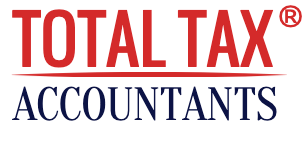PRIVATE PENSION CONTRIBUTION FOR DIRECTOR – WHAT MATTERS?

By the time you may have contributed certain amounts into your employee’s pension fund as a part of government auto-enrollment, however, the future is uncertain for all be an employee or the director. Hence a thoughtful consideration is just needed for your pension account as well keeping in mind the most tax-efficient ways available.
Private pension contributions are usually tax-free up to certain limits and extend to:
- Workplace pensions
- Personal and stakeholder pensions
- Overseas pension schemes that qualify for UK tax relief
How much can you contribute?
Tax is to be paid on your contributions, if savings in your pension account exceeds:
- 100% of your earnings in a year- this is the limit on tax relief you get
- £40,000 a year- this is the most you can save in a tax year (6 April – 5 April). You’ll only pay tax if you go above the annual allowance
- £1,055,000 in your lifetime.
Unused pension amount
You may carry forward any unused allowance from the past 3 tax years. However it applies to pension saving made to your UK registered pension schemes or to overseas schemes where either you or your employer qualifies for UK relief as the case may be.
How to make a contribution?
- Through personal funds
When you contribute to a pension through your personal funds, you receive tax relief as per the rate of Income Tax you pay. There is no limit to the amount you can pay to your pension account, but you need to give serious thought to the amount you can contribute while receiving tax relief. Currently, this limit is 100% of your annual earnings or a maximum of £40,000.
- Through limited company
When you make contributions directly from your company, these reduce your company’s taxable profits and your Corporation Tax liability likewise. However, if you take both salary and dividends, the dividends are not considered as a part of salary and only the salary component will be used to calculate your personal tax relief limit. That being said if you withdraw a small salary and receive a large dividend from the company, your tax relief limit for pension will be low.
So, in order to increase the amount you may contribute while enjoying the tax benefits, you can either increase your salary or may opt for making the contribution through your company.
Benefits of paying through your limited company
- employer contributions are counted as an allowable expense, which makes tax relief accessible to your company against Corporation Tax.
- Employer’s don’t have to pay NI on pension contributions
- Employer contribution passes the “wholly and exclusively” which means contributions must be deemed only for the purpose of business only.
What is included in the total income?
- Additional state pension
- State pension either basic state pension or new state pension
- Private pension (workplace or personal)
- Any taxable benefits
- Any other income, such as money from investments, property or savings
- Earning from employment or self-employment
You may start withdrawing your pension at the age of 55 and can be helpful during your retirement time.


